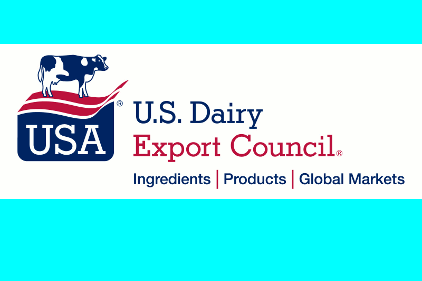U.S. dairy exports, by value, are on track to top $6.5 billion in 2013 – another record, and up more than 25% from the year before.
And while it’s tempting to call this year exceptional that wouldn’t be the case, says Alan Levitt, the vice president of communications and market analysis for the U.S. Dairy Export Council, Arlington, Va.
He notes that over the last decade, the value of U.S. dairy exports has increased, on average, 20% per year. If U.S. dairy exports were a mutual fund, it would get a five-star rating, Levitt writes in the November Dairy Foods (online next month). As for that 25% gain? This would be the sixth time in the last 10 years.
Global dairy markets are cyclical, so as conditions turn next year, it may be more challenging for U.S. suppliers to defend the share they gained in 2013. Levitt identifies five things to keep an eye on that could shape the market outlook.
1. World milk supply comes back
The world is back in growth mode again. Higher payouts – coupled with lower feed costs – means farmgate margins are much improved. So far, weather is better. New Zealand is off to a good start in their 2013/14 season; production is expected to be up 5-6% this year. European production is back in the black as well, and exportable supply should improve in the year ahead.
After a down year, milk production from the five major exporters is estimated to be around 274 million tons in the year ending June 2014, up 2.3% (+6.1 million tons) vs. the prior year. As more supply comes on it will put downward pressure on international commodity prices.
2. China's demand for whole milk powders underpins the world markets
Milk production in China reportedly was down 6% in the first half of 2013, mostly due to poor weather, necessitating greater imports. In addition, it’s still cheaper to import milk powder than produce fresh milk at home, where production costs are among the highest in the world. Meanwhile, their appetite doesn’t appear to be slowing anytime soon.
China purchases of whole milk powder (WMP) were on track to top 500 million tons in 2013, compared with virtually nothing five years ago. They’ve also become the world’s number-two importer of skim milk powder. China’s WMP imports alone require more than 4 million tons of milk, and they’ll continue to be the world’s biggest buyer in 2014.
3. The United States adds WMP supplies
Whole milk powder is a huge global market (world trade approximately 2.1 million tons) but the United States is not a player. U.S. production over the last four years is about 30,000 tons per year. Now that’s changing. Several companies have undertaken WMP projects this year that will add initial new capacity of more than 10,000 tons per month.
This development is a game-changer in the evolution of the U.S. dairy industry as a global supplier. Significantly, all this new production will go overseas. It also represents a shift in mindset: by adding WMP to our product mix, these new facilities reinforce that U.S. suppliers are becoming more responsive to the needs of the global market, and it changes the way the world see us as well by demonstrating our commitment to exports.
4. The Transpacific Partnership (TPP) gets done
The United States has been relatively disengaged from trade talks over the last six years, but recent progress is encouraging. TPP negotiations are nearing the end-game, with only the most contentious issues still on the table. The addition of Canada and Japan to the talks this year adds huge potential upside if the final agreement includes improved access for dairy. Look for the pact to be signed by mid-2014.
5. Whey’s nutritional reputation makes further inroads
International prices for dry whey have averaged nearly 60¢/lb. over the last three years, compared with around 36¢/lb. in the previous three years. In addition, more of the whey stream is shifting towards higher-protein fractions – whey protein concentrates (80% and above) and isolates. On the world market, WPC-80 has averaged better than $4.50/lb. this year, double what it fetched three years ago.
The sports nutrition market remains hot, but in some markets it’s being eclipsed by applications in infant and medical nutrition. The demand for protein in developed countries as well as developing markets will continue to outstrip the available supply for the foreseeable future, keeping prices firm throughout the whey complex.




